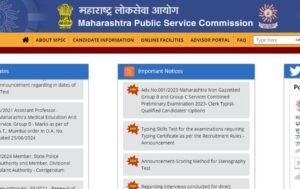Daily Current Affairs for UPSC 2023
Q) Recently seen in news, the ‘Global Methane Tracker’ Report is released by which one of the following organizations?
- Global Green Growth Institute
- Intergovernmental Panel on Climate Change
- Global Alliance on Health and Pollution
- International Energy Agency
Explanation:
- Option (4) is correct: Global Methane Tracker 2023 Report has been released by the International Energy Agency (IEA). The IEA produces and publishes country-level estimates for energy-related methane emissions and abatement options as part of our IEA Global Methane Tracker. As per the report, the energy sector is responsible for nearly 40% of total methane emissions attributable to human activity, second only to agriculture. Coal, oil and natural gas operations, leaks from end use equipment, incomplete combustion of bio-energy majorly contributed to the emissions. In the oil and gas sector, emissions can be reduced by over 75% by implementing leak detection measures and upgrading leaky equipment. Methane emissions from fossil fuel operations rose to more than 120 Mt in 2022, slightly below the record level seen in 2019. 70% of methane emissions from fossil fuel operations could be reduced with existing technology. More than 260 billion cubic metres (bcm) of natural gas is wasted through flaring and methane leaks globally today. Stopping this waste of natural gas would also reduce global temperature rise by nearly 0.1 °C by mid-century. Coal operations released just over 40 Mt of methane emissions in 2022, around half of which came from China, the world’s largest coal producer. Nearly 55% of methane emissions from coal mines globally could be avoided with existing technologies. Methane leaks can occur along the liquefied natural gas (LNG) pipeline. India’s share in global emissions stands at 8.3%. Agriculture is the largest emissions source and India’s share of emissions from the energy sector is 17%.
Q) Consider the following statements about fisheries sector in India:
- Fisheries exports constitute nearly two-fifth of total agricultural exports from India.
- The National Surveillance Programme for Aquatic Animal Diseases is implemented solely in the coastal states of India.
- The Pradhan Mantri Matsya Sampada Yojana also includes a programme for shrimp genetic development.
Which of the statements given above is/are correct?
- 1 and 2 only
- 2 and 3 only
- 3 only
- 1, 2 and 3
Explanation:
- Statement 1 is incorrect: India is the third largest fish producing country with a fish production of 14.73 million metric tonnes and one of the largest exporters of farmed shrimps around 7 lakh tonnes. India exports seafood to over 120 countries and is among the top 5 fish exporting countries in the world. Nearly 16 per cent of our country’s agricultural exports constitute fish and fish products.
- Statement 2 is incorrect: National Surveillance Programme for Aquatic Animal Diseases (NSPAAD) Phase-I was launched in 2013, with a focus on strengthening the farmer-based disease surveillance system. To ensure that disease cases are reported immediately, investigated, and farmers receive scientific assistance. NSPAAD Phase II will be implemented across India, and all the state fisheries departments, along with the Marine Products Export Development Authority (MPEDA) are expected to play an important role in this nationally important surveillance programme.
- Statement 3 is correct: ICAR-CIBA has taken up the genetic improvement programme of Indian white shrimp, Penaeus indicus as a national priority under the Make in India program. Shrimp farming sector mostly depends on one exotic Specific Pathogen Free stock of Pacific white shrimp (Penaeus vannamei). It is highly risky to depend on one species for the production of10 lakh tonnes and the livelihoods of two lakh farm families directly, and around ten lakh families indirectly associated in the ancillary sectors. India achieved about 430% growth in shrimp production during the last decade. Department of Fisheries has sanctioned the ‘Genetic Improvement Program of Penaeus indicus (Indian White Shrimp)-Phase-I’ with an outlay of Rs. 25 crore under the Pradhan Mantri Matsya Sampada Yojana (PMMSY) to establish a National Genetic Improvement Facility for shrimp breeding. It will break single species dependence and to promote indigenous species vis-à-vis exotic shrimp species.
Q) With reference to industrial sector in India, consider the following statements:
- The Index of Eight Core Industries constitutes approximately two-fifths of the weight of items in the Index of Industrial Production.
- The crude oil sector has the highest weight in the Index of Core Industries.
- The Index of Industrial Production is compiled and published quarterly by the Central Statistical Organization.
Which of the statements given above is/are correct?
- 1 only
- 1 and 2 only
- 3 only
- 1, 2 and 3
Explanation:
- Statement 1 is correct: The combined Index of Eight Core Industries (ICI) has increased by 7.8 per cent in January 2023 as compared to the Index of January 2022. ICI measures combined and individual performance of production of eight core industries viz. Coal, Crude Oil, Natural Gas, Refinery Products, Fertilizers, Steel, Cement and Electricity. The Eight Core Industries comprise 40.27 percent of the weight of items included in the Index of Industrial Production (IIP).
- Statements 2 and 3 are incorrect: The eight core sector industries in decreasing order of their weightage in the IIP: Refinery Products> Electricity> Steel> Coal> Crude Oil> Natural Gas> Cement> Fertilizers. Index of Industrial Production is an indicator that measures the changes in the volume of production of industrial products during a given period. It is compiled and published monthly by the Central Statistical Organization (CSO), Ministry of Statistics and Programme Implementation. Base Year for IIP is 2011-2012. It is a composite indicator that measures the growth rate of industry groups classified under: Broad sectors, namely, Mining, Manufacturing, and Electricity, Use-based sectors, namely Basic Goods, Capital Goods, and Intermediate Goods.
Q) Consider the following statements about AttukalPongala:
- It is held in Attukal Bhagavathi Temple located in the state of Tamil Nadu.
- It is a women-centric event that is celebrated once every five years.
- The Attukal Bhagavathi is considered as an incarnation of Kannaki, the main character of the ‘Silappathikaaram’.
Which of the statements given above is/are not correct?
- 1 only
- 1 and 2 only
- 1 and 3 only
- 2 and 3 only
Explanation:
- Statement 1 and 2 are incorrect: AttukalPongala festival is an annual festival is held in AttukalBhagavathi Temple of Kerala. This temple is dubbed as the Sabarimala for women. It is a 10 days event starting on the Karthigai star of the Malayalam month of Makaram or Kumbham. The festival begins with musical rendering of the story of the Goddess (KannakiCharitam) during the “Kappukettu ceremony”, conducted by the families authorized for this purpose.
- Statement 3 is correct: The goddess, AttukalBhagavathi, is believed to be an incarnation of Kannaki, the main character of the Tamil epic ‘Silappathikaaram’. The chief priest of the AttukalBhagavathi Temple lights the makeshift stove using fire brought from the sanctum sanctorum of the temple. The women use this fire for cooking their offering using rice, jaggery and coconut. They use only fresh items for their cooking as only fresh items are offered to god.
Q) With reference to Clean plant Program, consider the following statements:
- It will help in developing high quality seeds for the various pulses and millets grown in India.
- The Union government will completely fund the centres operating under the initiative.
Which of the statements given above is/are correct?
- 1 only
- 2 only
- Both 1 and 2
- Neither 1 nor 2
Explanation:
- Statement 1 is incorrect but statement 2 is correct: Under the Clean Plant Programme, Union Government plans to set up 10 ‘Clean Plant Centres’, on the lines of those in developed countries such as the US, Netherlands and Israel. These centers will be set up under the ‘Atmanirbhar Clean Plant Program’. It will boost availability of disease-free, quality planting material for high value horticultural crops. The centres will be fully funded by the Union Government. It will be implemented in a PPP mode in partnership with research organisations, agriculture universities and private sector partners. The National Horticulture Board (NHB) will anchor the clean plant programme. 10 centres will be established for fruit crops like apple, walnut, almond, grapes, mango, and pomegranate, among others in the next seven years till 2030. The much needed programme will foster disease-free and genuine planting materials for horticultural crops in India. The Clean Plant Centres will provide services of disease diagnostic, therapeutics, multiplying of plants and generation of mother plants.


 MPSC Rajyaseva 2025 Notification, Eligib...
MPSC Rajyaseva 2025 Notification, Eligib...
 MPSC Application Form 2025, Apply Online...
MPSC Application Form 2025, Apply Online...
 Financial Action Task Force (FATF), Func...
Financial Action Task Force (FATF), Func...





















